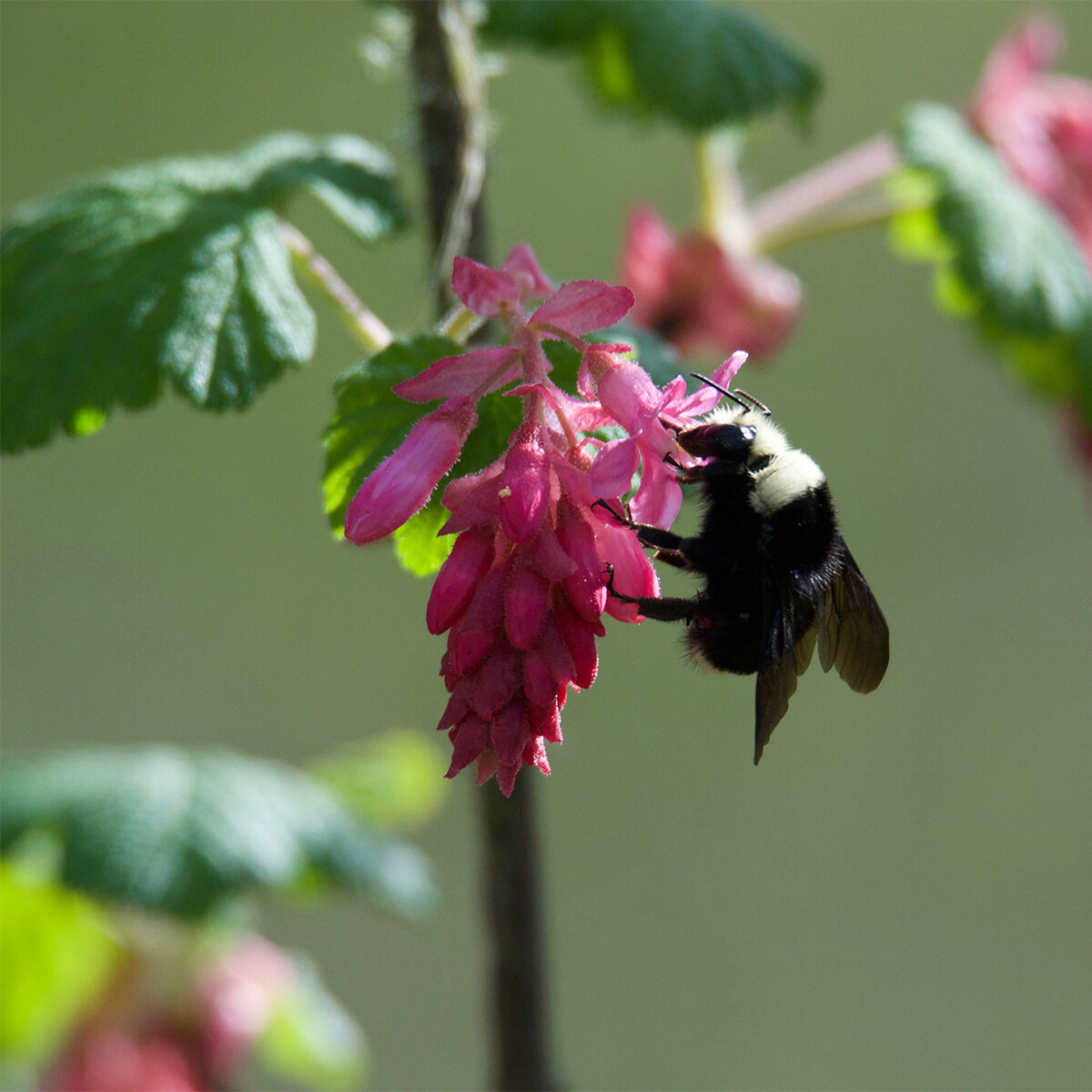In the mid afternoon light, I was attracted to the radiant blooms of the red-flowering currant. As I walked over, I noticed that I wasn't the only one drawn to them. A bumble bee was merrily foraging and enjoying the cool, warm spring weather.
Bumble bee colonies are annual. Each year a colony will produce queens that will then mate and find a place spend the winter, usually underground. All of the other bumble bees die. Thus, the first bumble bees of spring are the mated queens that overwintered from last year. When they emerge, they will find a suitable nest site and begin a new colony. Old rodent borrows are a popular nest site.
Bumble bees are amazing pollinators. They are out in early spring, are able to fly in cooler weather and are generalist foragers. In addition, they are buzz pollinators. Here is a PBS video that explains buzz pollination that is worth watching. It’s only 3 minutes and 32 seconds. https://www.pbs.org/video/deep-look-bumblebee/
Another interesting tidbit is that, unlike honeybees, bumble bee stingers lack a barb. So they are uninjured when they sting you, which also means they can sting multiple times. That said, bumble bees are generally not aggressive except when defending their nests or if they are being harmed.




